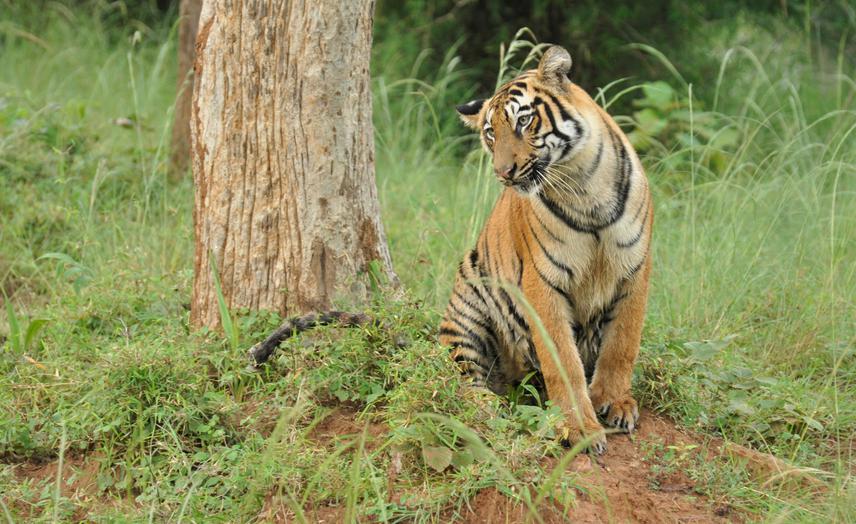Prerna Bindra
In India, relocation of people residing within Protected Areas, particularly core areas of tiger reserves, is a key conservation strategy to create and preserve undisturbed landscapes for endangered species especially tigers. Equitable, fair relocations are important from an ethical, people welfare perspective, while also having implications for conservation success. This is particularly significant in India, where millions reside in and around small, disconnected protected areas (PAs). In India, relocation of people from within PAs has evolved from compensated forcible evictions to voluntary, informed, and incentivised resettlements. However, questions have been raised on whether such policy shifts are applied in practice; with aspersions on the ‘voluntary’ nature of relocation, which it is argued maybe induced, or coerced.

Tiger Cub @ near jamni meadows -Tadoba Andhari Tiger Reserve
Since 1973, ~18,490 families have been relocated out of core areas of tiger reserves with diverse results. Outcomes of relocation vary across different areas, and also within the same geographies. While the dominant narrative is of distress and destitution post-displacement, occasional successes-indicating economic wellbeing post relocation have been documented. Yet, scholarship on factors, especially institutional processes, that influence the relocation experience is scant.
This project looks at relocation in the context of three Indian villages: a) Bhagwanpur (formerly Botezari) 107 families relocated from Tadoba Andhari Tiger Reserve (Maharashtra) in 2007, b) Palasgaon, ~ 117 families resettled from Tadoba in 2019 and c) Kurchiyad, ~100 families relocated from Wayanad Wildlife Sanctuary (Kerala). My research will look at the social-economic outcomes for the displaced people. It will also seek to understand the institutional support and practises made available to the relocated people, how these have evolved over time, and their influence on the outcomes of relocation.
For my research I will use a combination of key informant interviews, socioeconomic questionnaires, semi-structured interviews, focus group discussions and secondary data analysis.
The study will help recognise lacunae and future challenges of the relocation process, and identify best practices, based on the lived experiences of relocated communities and key decision makers. Across India, there are ~490 villages within tiger reserves that may be potentially relocated overtime. It is hoped that insights from my study will inform these resettlements and contribute towards a more empathetic and just approach. This is essential not just from an ethical perspective, but also as a conservation solution to create undisturbed habitats for endangered megafauna like tigers and elephants, in a populated, fast developing country like India.
Header: A tigress in the Jamni grasslands in Tadoba from where the Jamni village was relocated in 2014. © Prerna Singh Bindra